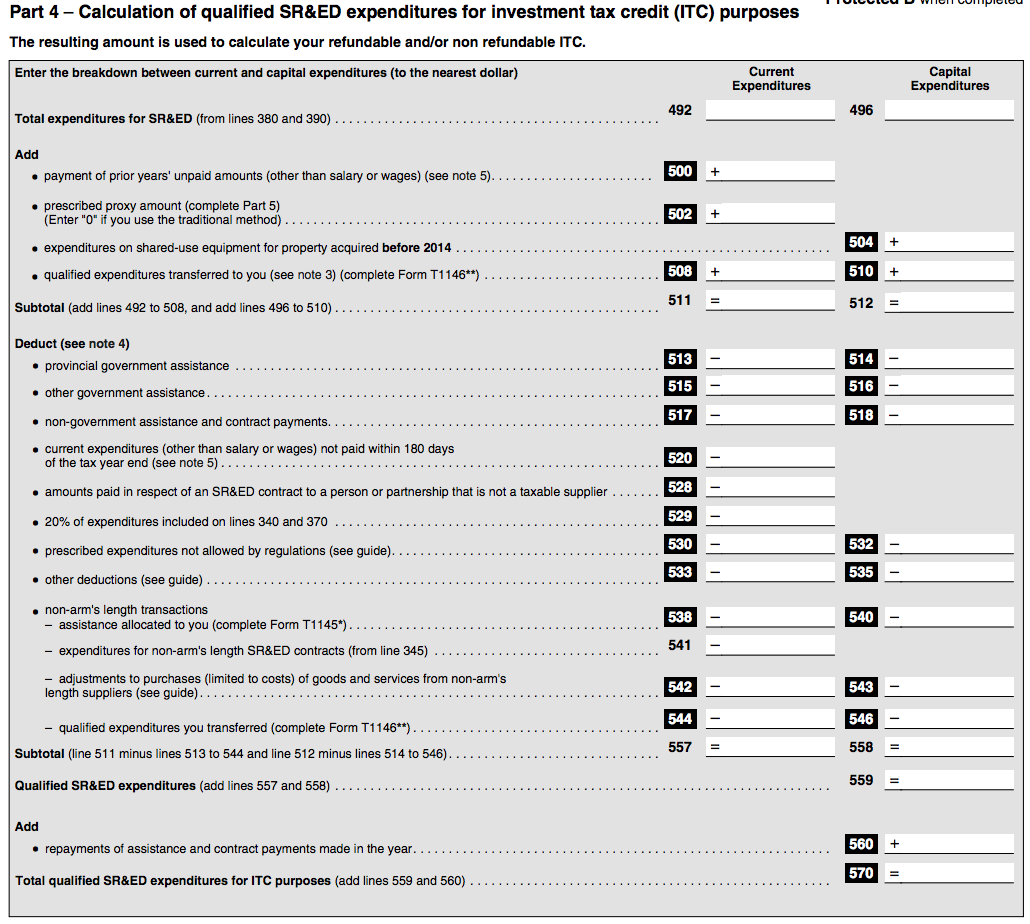CEWS and SR&ED – What you need to know

**This article has been updated on September 15, 2020, to include the most recent information on the CEWS program. Please work with a professional to ensure you are accessing the most recent information.**
On June 19, 2020, the CRA announced:
The Canada Emergency Wage Subsidy and the 10% Temporary Wage Subsidy for Employers are considered government assistance. Assistance received under either wage subsidy reduces the amount of expenses eligible for SR&ED investment tax credits and film and media tax credits. Additional information is available in the Canada Emergency Wage Subsidy application guide.
On April 11, 2020, the Canadian government implemented legislation regarding a new Canada Emergency Wage Subsidy (CEWS); the implications of this $73 billion subsidy and SR&ED claims is yet to be determined. This post will look at the legislation and how it may impact SR&ED.
Canada Emergency Wage Subsidy (CEWS)
The purpose of CEWS is to help employers rehire or keep employees if their revenue has decreased due to COVID-19 and to help position Canadian companies to resume normal operations once the crisis has passed.1
The subsidy amount varies depending on the claim period. For claim periods 1-4 (March 15 – July 4, 2020)2:

For claim periods 5-9 (July 5 – November 21, 2020)2:

There are scenarios where you may be eligible for a top-up based on losses from the previous 3 months, primarily for companies hit especially hard (loss of revenue 50% or more over a 3-month span). Please see the CRA website for more information.4
Allowing corporations to continue to employ their personnel enables them to reduce the loss of future revenue.
10% Temporary Wage Subsidy for Employers
The 10% Temporary Wage Subsidy (TWS) for Employers is a 3-month program that allows eligible employers to reduce the amount of payroll deductions they need to remit to the CRA. The subsidy is equal to 10% of the renumeration you pay from March 18 to June 19, 2020, up to $1,375 per eligible employee. The maximum total per employer is $25,000.[10% Temporary Wage Subsidy for Employers. (2020, July 31). https://www.canada.ca/en/revenue-agency/services/subsidy/temporary-wage-subsidy.html]
CEWS and TWS as Government Assistance
CEWS and TWS used for employees directly engaged in SR&ED will need to be deducted on the T661 as government assistance.
Line 431 – Other Government Assistance

All direct funding from government programs must be reported on this line. Standard items for SR&ED purposes include IRAP grants and other government (provincial or federal) funding related to employment. 5Only projects directly related to the SR&ED activities need to be reported here. If a $10,000 IRAP contract was received, and $7,000 went to an SR&ED employee and $3,000 was targeted towards an employee performing marketing of the product being developed, only $7,000 should be recorded on Line 431. Be aware that documentation will need to exist to justify this split.
Under the current guidelines, CEWS and TWS will be treated in a similar manner as IRAP funding and recorded on Line 431. This means only recording the amount of CEWS and TWS received and used for employees directly engaged in SR&ED on line 431. The amount of CEWS and TWS used toward employees not directly engaged in SR&ED should be included as income earned.
Line 515 – Other Government Assistance

Again, treating CEWS and TWS in a similar manner as IRAP means recording the amount on Line 515, along with similar programs. This amount should be identical to Line 431.6
How will CEWS (and TWS) affect your SR&ED ITC?
Example 1: employees are 100% SR&ED eligible
Below is an example of CEWS and ITC assuming that 75% ($847/week maximum for periods 1-4) of all eligible salaries were paid for by CEWS in the tax year.
- Your Ontario-based company has five employees doing 100% SR&ED eligible work. They are paid $100,000 each ($500,000 total) annually.
- You accept CEWS for them ($847/week for periods 1-4) 847 x 5 = $4,235/week. $4,235 x 16 weeks = $67,760.
- The way calculation works is that your expenses will be $775,000 (base salary + 55% proxy*).
- When CEWS is deducted, this amount becomes $707,240.
- Provincial amounts are then deducted (just the way the calculation works) which moves the total amount on which the tax credit is calculated down, to ~$627,888.
- Your tax credits are then calculated on the ~$627,888.
- The refund will be $299,113 (refundable + non refundable).
- The total value of CEWS ($67,760) + SRED ($299,113) is $366,873. (Yes, the math is correct!)
| SR&ED Expenditures | |
|---|---|
| Employee Salaries | $500,000 |
| Total Allowable SR&ED Expenditures (Line 400) | $500,000 |
| Subtotal - Additions | $275,000 |
| Deductions | |
| Government Assistance (ex. CEWS) | $67,760 |
| (subtract) Total Provincial Assistance (automatically calculated) | $79,352 |
| (equals) Qualified expenditures for ITC purposes (Line 570) | $627,888 |
| Breakdown of Tax Credits | |
| Federal ITC - Refundable | $219,761 |
| Federal ITC - Non-Refundable | 0 |
| Provincial Assistance - Refundable | $56,579 |
| Provincial Assistance - Non-Refundable | $22,773 |
| Estimated Refund | |
| Total Tax Credits - Refundable | $276,340 |
| Total Tax Credits - Non-Refundable | $22,773 |
| Total Tax Credits including Non-Refundable | $299,113 |
| Total Government Funding (CEWS+ITC) | $366,873 |
In this example, while CEWS reduced the total ITC, it is beneficial to take government assistance. Please see our post Government Support Doesn’t Mean Less Government Funding on more details on why taking government funding and a reduced ITC will benefit your company in the long run.
Example 2: employees are 50% SR&ED eligible
Below is an example of CEWS and ITC assuming that 75% ($847/week maximum for periods 1-4) of all eligible salaries were paid for by CEWS in the tax year.
- Your Ontario-based company has five employees working on SR&ED eligible work. Four employees are working 100% on SR&ED and one employee doing 50% SR&ED eligible work. They are paid $100,00 each ($500,000) annually. The total wages which are SR&ED eligible are $450,000 ($400,000 + $50,000).
- You accept CEWS for them ($847/week for periods 1-4) 847 x 5 = $4,235/week. $4,235 x 16 weeks = $67,760.
- Because one employee is only working 50% on SR&ED the amount CEWS included as government assistance is $60,984 ($847 x 4 = $3,388 PLUS $847 x 50% = $423.5) ($3,811.50 x 16 weeks = $60,984)
- The way calculation works is that your expenses will be $697,500 (base salary + 55% proxy*).
- When CEWS is deducted, this amount becomes $636,516.
- Provincial amounts are then deducted (just the way the calculation works) which moves the total amount on which the tax credit is calculated down, to ~$565,099.
- Your tax credits are then calculated on the ~$565,099.
- The refund will be $269,202 (refundable + non refundable).
- The total value of CEWS ($60,984) + SRED ($269,202) is $330,186. (Yes, the math is correct!)
| SR&ED Expenditures | |
|---|---|
| Employee Salaries | $450,000 |
| Total Allowable SR&ED Expenditures (Line 400) | $450,000 |
| Subtotal - Additions | $247,500 |
| Deductions | |
| Government Assistance (ex. CEWS) | $60,984 |
| (subtract) Total Provincial Assistance (automatically calculated) | $71,417 |
| (equals) Qualified expenditures for ITC purposes (Line 570) | $565,099 |
| Breakdown of Tax Credits | |
| Federal ITC - Refundable | $197,785 |
| Federal ITC - Non-Refundable | 0 |
| Provincial Assistance - Refundable | $50,921 |
| Provincial Assistance - Non-Refundable | $20,496 |
| Estimated Refund | |
| Total Tax Credits - Refundable | $248,706 |
| Total Tax Credits - Non-Refundable | $20,496 |
| Total Tax Credits including Non-Refundable | $269,202 |
| Total Government Funding (CEWS+ITC) | $330,186 |
This example illustrates how to apply CEWS when an employee is not spending 100% of their time conducting SR&ED eligible work, as dictated by the Assistance and Contract Payments Policy.
Conclusion – CEWS and SR&ED
CEWS and TWS are COVID funding from the CRA which will allow corporations to continue any ongoing SR&ED activities. The downside is that COVID funding is classified as government assistance and must be included both (a) as income earned by employers while filing their 2020 taxes and (b) must be counted in SR&ED calculations if applied to eligible employees for eligible SR&ED activities.
For full details of CEWS please visit their website.
For full details of 10% TWS please visit their website.

Comments are closed.